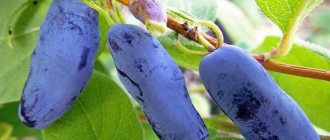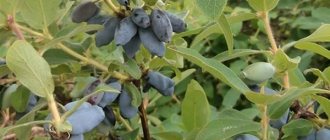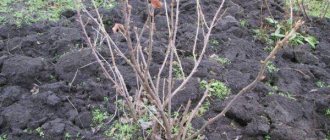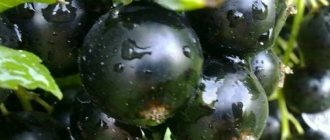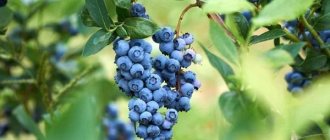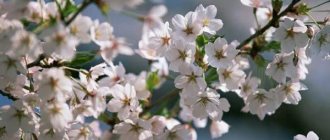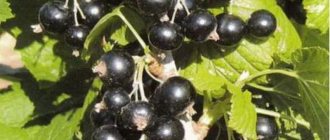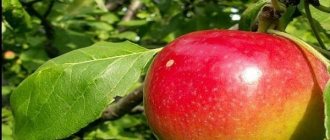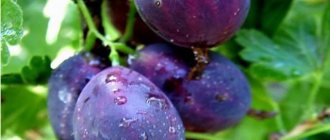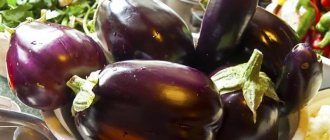Strawberry Kupchikha variety description, photos, reviews, characteristics and productivity of which are presented in this article, is the first and so far the only strawberry variety that has been included in the State Register of Russia. The strawberry variety Kupchikha was registered and patented in 2017. It was obtained by crossing European muscat strawberries with garden strawberries with large berries.
The variety has all the positive characteristics of its “parents”. It has virtually no varietal deficiencies. The berry is partly similar to strawberries, and partly to wild strawberries.
Next, we will describe the characteristics of the strawberry variety and berries, as well as the features of its cultivation.
Description of strawberry Merchant's wife
When starting the description of the berry crop, it must be said that this is neither a strawberry nor a wild strawberry, but rather a hybrid created on the basis of these two plants. Muscat strawberries and wild strawberries were taken as parents. The authors of the earthworm Kupchikha are breeder from the city of Bryansk S.D. Aitdzhakova, who works at the Kokinsky stronghold of VSTISP. Since 2014, the plant has settled in the first garden plots, and was included in the State Register in 2021.
All the characteristic features of the new berry crop are inherited at the genetic level:
- The merchant's wife took large berries from the strawberries and a high yield. In addition, the plants are bisexual and do not require additional pollination.
- Wild strawberries provided the nutmeg aroma, a special sweet taste and a high content of anthocyanins in the berries. Also, thanks to this plant, the hybrid has received high immunity to climatic and weather conditions, and is practically not affected by diseases and pests.
Description of the bush
The photo above shows that the Kupchikha strawberry bush is strong, tall, about 25 cm high. It has wide trifoliate leaves. They are slightly concave.
Attention! The green plates are distinguished by ribbing and wrinkles; it is by these signs that one can understand that the gardener is looking at a real Kupchina and not a fake.
The leaves sit on long petioles that are pubescent. Each bush produces up to 15 semi-spreading flower stalks. They do not rise above the leaves. The large white flowers are bisexual. In total, up to 100 inflorescences are formed on one bush.
After flowering, a dark red mustache appears on the Kupchikha. There are enough of them for reproduction.
Description of berries
To understand the features of the new crop, you need to see with your own eyes the Kupchikha variety of non-repairing strawberries, photographs and read the description of the berries. It is the fruits that cause special admiration. Most berries have a bizarre shape: flattened ridges, tridents or fans with 2-5 peaks.
The fruits are large, cylindrical in shape. The weight of one strawberry is from 3.7 to 20 g, length is 3-4 cm. The berries ripen unevenly: more often than not, white tips remain at the initial stage. Before harvesting, the color evens out, the fruits become dark, ruby, and sometimes purple.
Gardeners also like the taste of Kupchikha strawberries. Everything in the fruit is harmonious, balanced, the sourness is practically not felt. The picked berries are distinguished by the aroma of nutmeg and strawberries.
The berries are dense, elastic, but not too juicy. The purpose of the variety is universal; the fruits can not only be eaten fresh, canned, but also frozen and dried. The taste qualities are not lost.
The berries of the Kupchikha strawberry variety are rich in useful substances; it also includes:
- sugar – 5.8%;
- ascorbic acid – 79%;
- organic acids – 0.6%.
Tasters and cooks highly appreciate the fruits of the Kupchikha variety, giving them 5 points out of 5 possible.
To make sure that the description of the Kupchikha strawberry is correct, it is better to watch the video:
Productivity
According to the description given by the originators, Kupchikha strawberries can be grown throughout the Russian Federation. Of course, depending on climatic conditions, the yield in the regions will not be the same. On average, you can remove up to 310 g of tasty large berries from one strawberry bush. If all rules of agricultural technology are followed, the yield can increase to 500-800 g.
Characteristics of berries
Also check out these articles
- Proper restructuring
- Tillandsia
- Irga berry - how to plant and care
- Early strawberries: harmful properties for the body
Earthweed Kupchiha has elongated berries, slightly flattened on opposite sides. The shape can be unusual, whimsical with “spouts” and shoots; first of all, this captivates children, who see bizarre animals and mythical creatures in every berry.
During the first fruiting period of the season, each berry can reach 6 cm in length and weigh 20-25 grams
During the first fruiting of the season, each berry can reach 6 cm in length and weigh 20-25 grams. The color is burgundy or dark red, there may be a purple tint.
The flesh is red. The taste is sweet with a pronounced taste of wild strawberries, the aroma is spicy-nutmeg, rich. The berries on the bushes never rot, but if they are not picked for a long time they may begin to dry out.
Pros and cons of the Kupchikha strawberry variety
Like any varietal plant, the Kupchikha strawberry variety, according to reviews from those who have already grown it, has a lot of advantages:
- Stable fruiting and yield in any climatic conditions, as a rule, at least 300 g per bush.
- Large fruits of unusual shape.
- Excellent taste and versatility of use.
- The Merchant's Wife's berries do not fall off or rot.
- Dense fruits are easy to transport.
- The formation of whiskers is small, which makes it easier to care for, but they are enough for reproduction.
- Flowers are 100% pollinated.
- Strawberries tolerate winter temperatures down to -24 degrees with virtually no loss.
- The culture is suitable for pot growing.
- Thanks to the immunity received from the originators, the Kupchikha strawberry almost does not get sick and is not damaged by pests.
- One of the features is unpretentiousness, which makes it easier to care for and allows you to grow Kupchiha strawberries in slight shade.
- You can grow the variety as a ground cover plant, leaving the tendrils to take root. Of course, there will be fewer berries, but there will be no weeds in the garden.
If we talk about disadvantages, consumers note the lack of acid. And gardeners complain about one-time flowering.
Reviews
An excellent variety of strawberries - they don’t get sick, they don’t die in rainy summers, we don’t do any treatments. 100% pollination, does not freeze. The productivity is high - on an adult two-year-old bush - 20-30 peduncles. Everyone also likes the taste, and what a aroma! Can be dried and added to tea.
We planted the Merchant's Wife by accident and bought 10 bushes to try. Oh, how it blooms! White carpet! And then everything is tied up, but the berries are of different sizes and are collected easily. The pulp is dry, tasty, aromatic. Children eat it with pleasure, you can make jam and dry it. It is very easy to care for, does not get sick, the bushes are green and very stable. Ripens in early June.
Last fall I planted 35 bushes, one froze. The bushes are powerful, the berries are of unusual shape. The taste is amazing, incomparable to anything. Productivity is high. We tried many varieties - Asia in first place and Kupchikha in second.
It has many shortcomings, but it is the best dredge plant that a Russian gardener has seen. She forgives everything for the true strawberry aroma and honey sweetness with a thin nutmeg trail, for the marvelous cascades of flower stalks and the bizarre shape of the berry - the strawberry cultivator Kupchikha knows how to surprise.
And not only in shape: rare productivity, size not typical for dredges, resistance to diseases. What is important to know about the variety - pomological characteristics, succinct description, hidden shortcomings and personal growing experience, opinions about the miracle berry Kupchikha.
Planting and caring for strawberries Kupchikha
When planting Kupchikha strawberries, you need to take into account the growing pattern. According to the rules, bushes are planted every 40-50 cm in a row and between rows. Experienced gardeners recommend planting strawberries in a checkerboard pattern. Strawberry beds can be propagated 2 times a year - in spring and autumn.
Warning! It is not recommended to thicken the plantings, as insects can appear in poorly ventilated strawberry beds and diseases can develop.
Selection and preparation of a landing site
For planting, choose an open place or openwork shade. In this case, fruiting will not occur simultaneously, which is convenient for gardeners.
Plants prefer fertile soil, loam or sandstone. Therefore, before planting it needs to be properly refueled. Before digging, add ammonium nitrate, superphosphate, wood ash and nitroammophoska. As for soil acidity, the best harvest is harvested on neutral or slightly acidic soils.
Preparation of planting material
Since the hybrid earthweed Kupchikha is very young, purchasing planting material is not so easy. In order not to run into a fake, it is best to buy seedlings in
High-quality seedlings should be:
- With a well-developed root system, without signs of rot or damage.
- There should be no broken leaves.
- You need to choose seedlings with a green and elastic heart.
Bushes can have an open or closed root system. If the merchant's strawberry was grown in a container, then it is enough to moisten the soil well before planting. It is recommended to soak seedlings with an open root system in water for 2 hours.
Landing rules
Merchants' strawberries are planted in the same way as other varieties of crops. Before planting, be sure to disinfect the soil with a solution of copper sulfate (100 g per bucket) or potassium permanganate (10 l per 1 g). Such treatments will save the plantings from many diseases and pests, including blackleg. Prevention is necessary even with good plant immunity.
For beginner gardeners, step-by-step planting recommendations:
- The depth of the hole should correspond to the size of the root system.
- Pour loose soil onto the bottom and make a mound on which to plant strawberry seedlings.
- Gently straighten the roots so as not to damage them.
- Fill in the remaining soil. At the same time, you need to monitor the position of the heart: it should be slightly above the soil level. It is not worth deepening or, conversely, raising the seedling. This will have a bad effect on the development of the Kupchikha strawberry.
- Compact the soil to remove air pockets and drain well. If the heart pulls down, you need to slightly lift the bush.
- The hole does not need to be filled to the very top, because it is more convenient to water the plants in the recess. In addition, after planting, the root zone must be mulched with compost, humus or dry straw. This will retain moisture longer and prevent weed growth.
Watering and fertilizing
Strawberry Kupchikha is a heat-resistant plant, but excessive watering or drought negatively affects the development of the bush, and, consequently, the yield.
It is necessary to monitor the condition of the soil, maintain moisture, but stagnation of water or a swampy state should not be allowed. Before setting the berries, the bushes are watered from above, and sprinkling is also possible. But after the fruits begin to fill, irrigation is carried out only at the root.
Attention! 1-2 liters of water are poured onto one Kupchikha bush, depending on precipitation.
If the weather is rainy, irrigation should be abandoned. In spring and autumn, moisture-recharging irrigation is carried out if there is no rain at that time.
Today, many gardeners refuse mineral fertilizers, since calculating the need for certain elements is not so easy. Organic matter is used for fertilizing.
Bushes need nutrition several times during the growing season:
- In early spring, to increase green mass and destroy disease spores and pests, water with the following mixture: add 1 g of potassium permanganate, 1 g of boric acid and 7 drops of iodine to a bucket of water. Before watering, generously sprinkle Kupchikha strawberries with wood ash. Then the bushes are irrigated with clean water.
- At the moment of growing green mass, pour ammonia onto a bucket of water: 2 tbsp. l.
- During flowering and at the beginning of fruiting, the plantings are fed with an infusion of fermented grass. For 10 liters of water, 1 liter of infusion is enough.
- After the harvest is harvested, you need to feed the plantings with wood ash.
Mulching and loosening
Strawberries prefer loose soil and the absence of weeds. To do this, the surface is mulched with rotted sawdust, humus, straw or pine needles. Moisture is retained under this layer and nutrients are not washed out. In addition, straw, sawdust or pine needles keep the berries clean.
Preparing for winter
Merchant's wife is a frost-resistant plant. If the winter temperature in the region is not lower than 24 degrees, it is enough to mulch the soil with a thick layer. In more severe conditions, plantings are covered with spruce branches, any non-woven material (polyethylene is not allowed!) and covered with a layer of earth.
Attention! If there is snow cover, then it is not necessary to fill it with soil.
How is a hybrid propagated?
Zemclunica Kupchikha usually reproduces by antennae. You can try to find seeds of this hybrid, but they are usually of little use - germination is low. Even after planting the most “tenacious” ones in open ground, they may begin to wither, and the harvest will only be produced the next year. But if there are no other options, then this one will do, but you should immediately warn that there will be a lot of work with seedlings.
The first step is to germinate the seeds, then plant them in fertilized soil and wait until the shoots appear. Small sprouts take about 2-3 months to grow. They need to be watered from time to time, you can feed them with wood ash or minerals, or loosen the soil with something like toothpicks or sticks, since a larger tool can seriously damage the roots. And only after all these procedures and painstaking care can the surviving plants be planted in the ground.
Zemclunica Kupchikha usually reproduces by antennae
When planting seedlings obtained from tendrils, the gardener receives large, powerful bushes and almost 100% survival rate with minimal effort and time. Already in the first summer after planting you will be able to enjoy fresh berries.
Diseases and pests
The strawberry variety Kupchikha, according to gardeners, is resistant to diseases and pests, but problems cannot be completely avoided. Therefore, preventive measures are necessary.
Possible diseases and pests of the Kupchikha earthen grass:
- white and brown spotting;
- gray rot and late blight;
- strawberry mite;
- raspberry-strawberry weevil.
Preventive measures
- remove weeds in a timely manner, pick ripe berries;
- remove damaged leaves, bushes, berries;
- 4 times a year (early spring, before budding, after harvesting and before wintering) treat the plantings with 1% Bordeaux mixture;
- plant onions, garlic, marigolds and other fragrant plants between the Kupchikha bushes;
- treat plantings with fungicides against pests.


